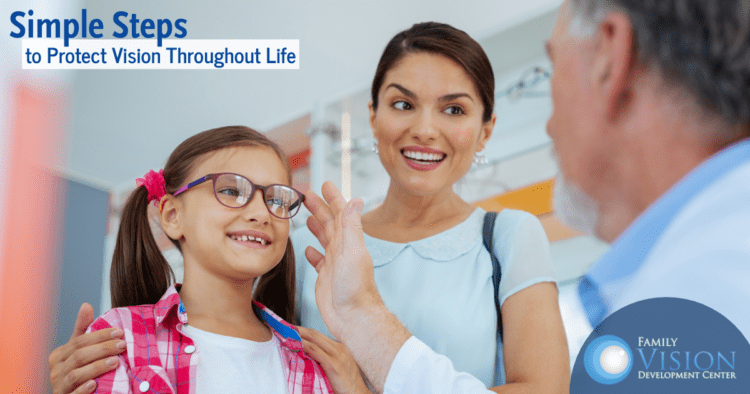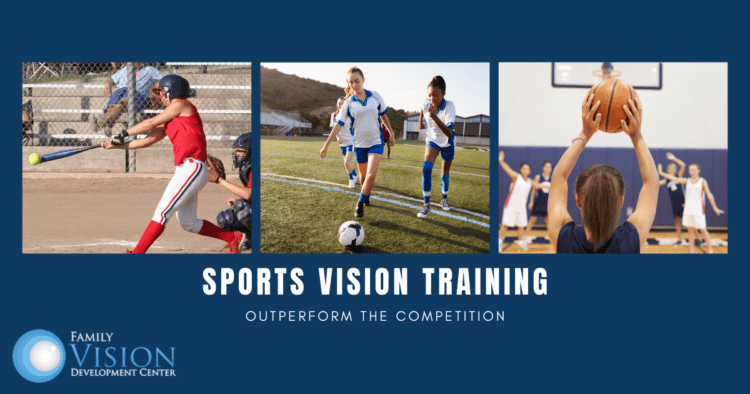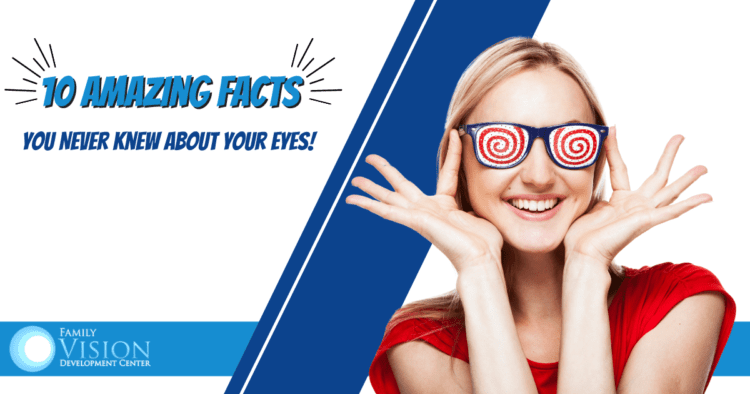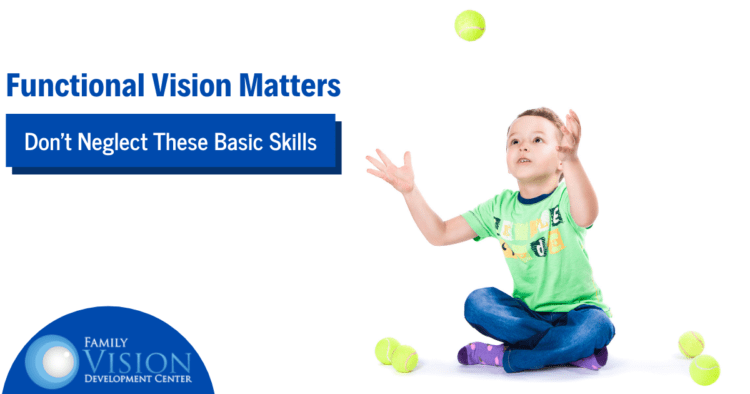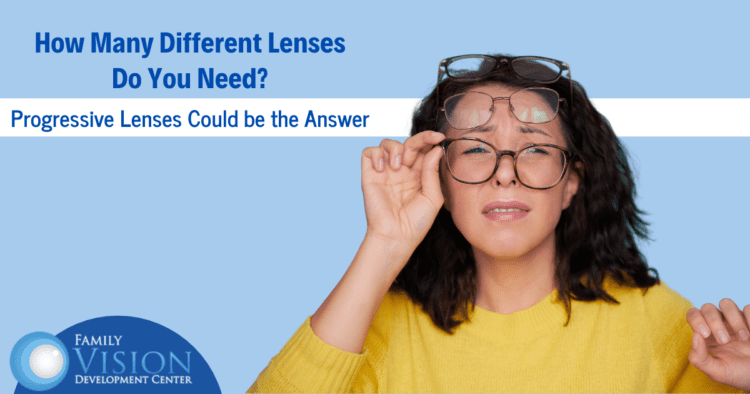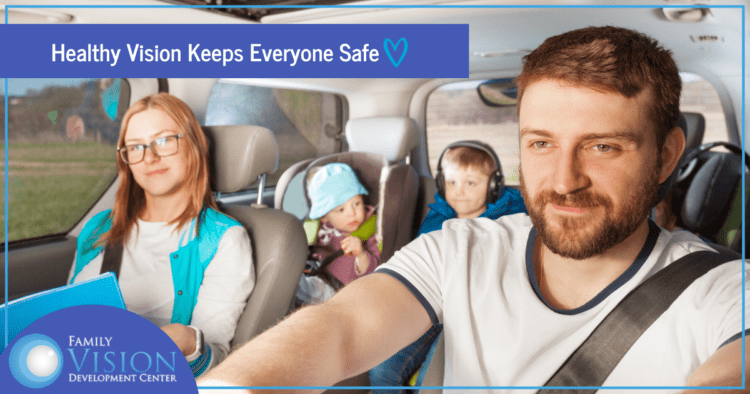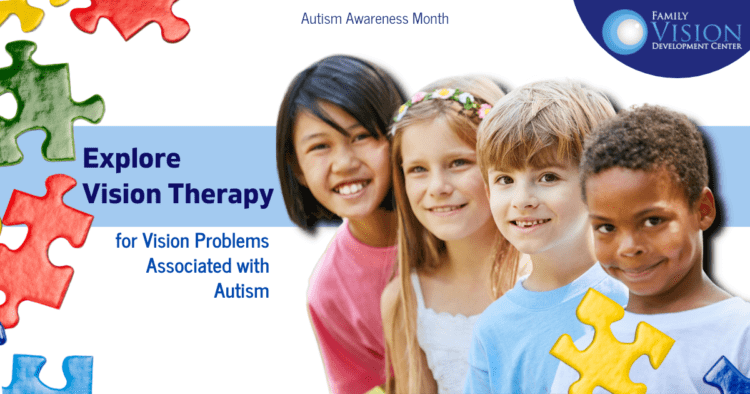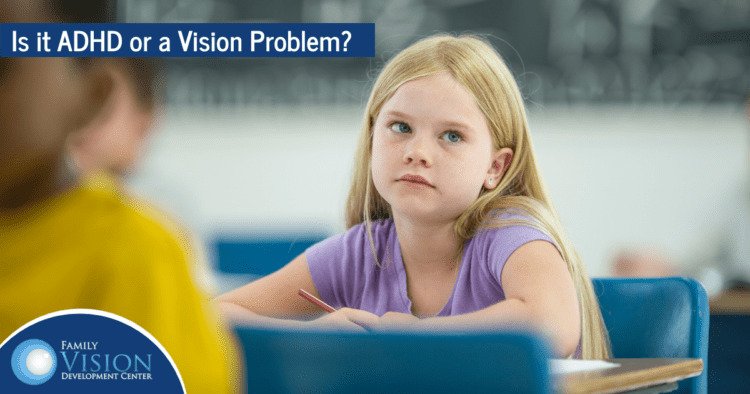Most people understand the importance of seeing their medical doctor for regular exams in order to maintain their health. But seeing an eye doctor for vision exams on a regular basis is just as important in order to maintain proper eye heath. Here’s what you can do to protect your vision at any age.
Start Early
The old saying about the early bird catching the worm is an accurate one, as many eye conditions are more effectively treated the earlier they are detected. Unfortunately, many children are not getting regular eye exams, instead relying on simple screenings that do not detect many forms of eye disease. For example, Amblyopia, a vision development disorder, can affect 2-3% of all children. If promptly treated, vision loss can be avoided. But if left untreated, it can escalate to the point of legal blindness.
Start Later
Even though the best time to start your visits to the eye doctor is while you are young, it is OK to start later in life. Don’t get the idea that if you did not have eye exams as a child, there is no point going as an adult. It is never too late to start caring for your eyes! There are many treatment options available for adults so don’t hesitate to address any vision concerns as you get older.
Prevent Eye Diseases with Continued Care
As you age, regular eye exams can detect many eye diseases that can cause serious damage if not treated such as:
- Cataracts
- Diabetic retinopathy
- Glaucoma
- Age-related macular degeneration
Many eye diseases start without any symptoms and therefore go unnoticed for long periods of time, making treatment options more difficult in some cases. A comprehensive eye exam is the best way to detect these diseases in their early stages when treatment is most effective for preventing vision loss.
Establish Routine Vision Exams for the Whole Family
The best way to maintain healthy vision is to establish a schedule for exams for each member of the family and stick to it. It is recommended the children get their first exam at 6 months, then at age 3 and again before kindergarten. Eye exams should be performed on an annual basis after age 5 and throughout life. People with diabetes and those with a higher risk for glaucoma should get a dilated eye exam every year.
Regular visits to your optometrist can keep your vision strong throughout your life. Contact Family Vision Development Center in Aurora at 630-862-2020 to schedule an appointment for each of your family members to get started on better eye health.
Adult vision therapy is a type of physical therapy for the eyes and brain, and consists of specialized “eye exercises” that help to recover or develop important visual skills. Typical vision therapy programs are often recognized as a great way to help children correct their vision, improve their reading skills, increase their athletic ability and even feel better about themselves. But the fact is, it can do the same amazing things for adults! It’s never too late for self-improvement. And while glasses or contacts alone may not be the best way to correct your vision, a customized adult vision therapy program just might give you the results you are looking for. Here are a few important ways that vision therapy can make a difference in an adult’s life.
- Improve performance at work – the right adult vision therapy program can improve hand-eye coordination, the ability to read things up close (such a book or computer) and the ability to concentrate. These visual improvements not only improve performance, but can also reduce stress in the workplace and make you a more productive worker.
- Reduce headaches – more than 15% of adults experience severe headaches or migraines. Both of these are common symptoms of a binocular vision problem (a condition in which the eyes don’t align properly). An adult vision therapy program can improve the communication between the eyes and brain, correct the binocular vision disorder and alleviate the headaches.
- Correct eye turns (strabismus) – while commonly experienced by children, adults can also suffer from strabismus, or eye turns. This can present as inward or outward crossing of one or both eyes, and can be consistent or intermittent. Vision therapy is highly effective for improving eye alignment, eye movements, focusing and more.
- Restore vision following a stroke or concussion – a traumatic brain injury (TBI), including a concussion, stroke, sports-related head injury, car accident or other violent blow to the head, can severely impact the visual system. A vision therapy program known as neuro-optometric rehabilitation can help restore visual impairment that has resulted from a TBI.
- Improve overall feeling of well-being – experiencing a vision disorder can have the same effect on an adult as it does on a child. A daily struggle with underdeveloped visual skills can have a big impact on your overall emotional health. Adult vision therapy is a great way to improve overall performance, motivation and self-confidence, which can result in more happiness at home and with your family.
Family Vision doctors are adult vision therapy specialists
Our vision therapy specialists have extensive experience and advanced training in a variety of techniques, including advanced therapy such as vision rehabilitation after traumatic brain injury and syntonic light therapy. We treat patients of all ages, and will customize your treatment plan according to your specific vision correction needs. Contact our Aurora office at 630-862-2020 to learn more or to schedule a consultation with one of our doctors.
Additional information can be referenced here
Most young sports athletes are competitive in nature. In this sense, they want to earn a spot on the best team and play in the most games possible. In order to accomplish these goals, they must have highly developed skills in certain areas and outperform those they are competing against for the limited spots on the team. One effective way for your athlete to prepare is to participate in a sports vision training program. These unique vision therapy programs are specifically tailored to the individual athlete to help develop and strengthen their visual skills and help them gain a competitive edge over their competition.
During a sports vision therapy program, athletes work on enhancing the following skills and abilities:
- Hand-eye coordination – using the eyes to control the movement of the hands
- Visual reaction time – the amount of time it takes to perceive a visual event and react to the stimulus
- Eye tracking – the ability to maintain focus on a specific moving object (keep your eye on the ball!)
- Visual acuity – the ability to see an object clearly while it is in motion
- Eye focusing – the ability to keep an object in focus, as well as change focus from one object to another quickly and accurately
- Peripheral vision – the outer edges of your field of vision, or being able to see out of the corner of your eye
- Depth perception – seeing things in three dimensions, and the ability to accurately judge the distance and speed of something
Thoroughly developing these skills can help an athlete achieve success in sports by increasing their agility and response time, movements on the field or court, ability to catch, throw, pass or hit a ball, as well as the ability to continually change focus throughout a game.
Sports Vision Therapy at Family Vision Development Center
Different sports rely differently on each of these skills. Therefore, our vision therapy programs are custom tailored based on the specific sport that your athlete plays. Our goal is to improve the eye function of athletes and reduce their risk of injury, by enhancing their visual perceptual skills and visual motor skills. Following a thorough evaluation, the therapeutic eye exercises are completed right in our office by our highly-skilled vision therapy specialists, with incredible results. Contact us today at 630-862-2020 to learn more.
Additional information can be referenced here
You may not realize just how amazing your eyes actually are. After all, as long as your vision is clear (or it’s been appropriately corrected with glasses or contacts) you may not put a lot of thought into how they work. Here are some interesting facts about our eyes that will probably surprise you.
- Humans blink around 15-20 times in a minute. That equals an average of 900-1200 times per hour that you’re awake, which can typically add up to over 19,000 times a day!
- Scientists estimate that the human eye can detect up to 10 million different colors.
- Iris scans are a very effective and accurate form of security screening. For comparison, a fingerprint has 40 unique characteristics, but an iris has 256.
- The muscles that move the eyes are the strongest muscles in the human body for the job they need to do. They are 100 times more powerful than they need to be.
- Blind people, whether they were born with eyesight or not, can dream in visual images, as they have the ability to experience visual sensations in the brain.
- The eye contains over two million working parts and is the second most complex organ in the body (the brain is number one).
- Ommetaphobia is an extreme fear of eyes.
- There has never been a successful transplant of an entire eyeball in a human (doctors have never been able to overcome the complex web of nerves, blood vessels and muscles involved).
- Newborn babies do not produce tears when they cry, as their tear ducts are still developing (but crying without tears when they are older than a few months can be a sign of blocked tear ducts).
- Heterochromia is a condition in which a person has more than one eye color. It can appear as two completely different colored eyes, such as one brown and one blue, or as one eye having multiple colors.
One More Fact About Eyes
Here is one more interesting bonus fact about vision – 80% of visual impairment can be prevented or cured. That is an important one to know and understand. That means that regular visits to your eye doctor can help to ensure healthy vision for life. At Family Vision Development Center, our professional and experienced team will help protect your eyes and vision through our comprehensive vision exams, our state-of-the-art corrective lenses and our advanced, specialized vision therapy programs. Contact our Aurora office at 630-862-2020 to learn more or to schedule an appointment.
Kids rely on their visual skills all year round in everything they do. But it’s not simply 20/20 vision that is needed. Functional vision refers to the entire visual system, including the eyes, brain and visual pathways between them, working together to help them interact with the world around them. Whether it is the beginning of the school year or the middle of summer break, proper functional vision can help ensure your child does well while reading, writing, playing sports or basically any daily activity. A problem with any of the following 4 components of functional vision should be treated as quickly as possible.
Functional Vision Skills
Tracking – the ability to move your eyes accurately and smoothly from place to place or across a page. A problem with eye tracking can affect reading fluency and comprehension, handwriting, hand-eye coordination and sports performance.
Focusing – the ability to easily switch focus between near and far objects. Difficulty with focus can cause eye strain, blurred vision, headache and fatigue, as well as frustration in the classroom when switching between desk work and a white board.
Visual Processing Skills – the way the brain interprets and makes sense of what the eyes see in the world around us. This can mean recognizing the difference between two similar letters, or even understanding that a ball coming at your face should be caught. Visual processing skills have a big impact on a child’s ability to learn, as well as their self-esteem.
Eye Teaming – both eyes working together as a team, in a coordinated and precise manner, to make a single image. Symptoms of eye teaming problems include poor depth perception, double vision, headaches and reading problems.
Vision Therapy for Functional Vision Problems
The best way to determine the efficiency of your child’s visual skills is through a functional vision assessment. This comprehensive exam can allow us to evaluate and diagnose any functional vision problems, and in turn, we can develop a custom vision therapy program to target the specific issues your child is dealing with. Vision therapy is an extremely effective form of treatment for all areas of functional vision disorders. And the doctors at Family Vision Development Center have advanced training in the latest vision therapy techniques, in order to provide the best possible outcomes for your child.
Contact our office at 630-862-2020 or visit us online to learn more about our vision therapy programs or to schedule your appointment.
If you’re like many people over the age of 40, you may have picked up a few pairs of cheap magnifying eyeglasses at the dollar store or drugstore to make reading small print a bit easier. And while they may get the job done for a while, the time will likely come to invest in quality lenses made specifically for your eyes. Progressive lenses are a very popular option, but they are not the best choice for everyone. Read on to see if progressive lenses are right for you.
Difference between bifocals and progressive lenses
Bifocal lenses have two different prescription strengths in one lens – one for distance vision (in the top portion of the lens) and one for close-up reading (in the lower part of the lens). There is typically a distinct shift in focus as you look between the two. On the other hand, progressive lenses are made up of three prescriptions. They are designed to give you a seamless transition between far objects, mid-range work and close-up focus as your eyes move downward on the lens.
Advantages of progressive lenses
As previously stated, the design of progressive lenses allows you to shift from distance vision, to computer work, to reading a book all with one pair of glasses. This can be very convenient as opposed to switching between several pairs based on the work you are doing. Also, the prescriptions in the lenses are made to “blend” together, so you don’t see any focus line while switching between tasks.
Drawbacks of progressive lenses
One big drawback of progressive lenses is the adjustment period getting used to them. It does take some time to train your eyes to look through the correct lens, based on your activity (computer work, reading, etc). Additionally, your peripheral vision may become distorted until the eyes and the brain learn to work together to focus properly. For some, this adjustment period might only last for a few days, while others never adjust properly. Progressive lenses also tend to cost more than other types of lenses. The cost versus benefit would be an individual choice based on insurance, personal needs, or other preferences.
Family Vision is your source for all types of custom eyewear
At Family Vision Development Center, we have a large selection of eyeglasses and lens options to choose from. After a comprehensive vision exam, we’ll help you decide which lenses are right for you, based on your lifestyle and preferences. And we’ll even help you choose the perfect frames for your face shape! Contact our Aurora office today at 630-862-2020 to schedule your appointment!
Additional information can be referenced here
Learning to safely drive a car includes passing a driving exam, understanding the functions and safety features of your car and of course, a lot of practice. But what they might not stress in driving school is the important role that healthy vision plays in road safety. So along with regular maintenance on your vehicle, make sure you place the same importance on maintaining your vision to ensure a safer driving experience.
Age can make a difference
Of course it is important to take care of your vision at every age. But when it comes to driving, there are certain age groups that may encounter more difficulty if their vision is compromised. For example, young people with new driver’s licenses, as well as older drivers, may experience problems with focus and attention while driving, along with slower reaction times when on the road. These additional risk factors make maintaining good vision even more important for staying safe while driving.
Vision disorders can make driving difficult
There are a number of ways that a vision disorder can create an unsafe situation for a driver. Inside the car, it can greatly impact a driver’s ability to read essential information on the vehicle’s dashboard or navigation system. Additionally, out on the road it can prohibit them from safely seeing and reacting to road hazards, warning signs, other vehicles or pedestrians, as well as completing basic maneuvers such as merging, parking or backing up. Some common vision conditions that can affect safe driving include:
- Macular degeneration
- Glaucoma
- Retinal disease
- Cataracts
- Strabismus
- Amblyopia
- Nearsightedness
- Farsightedness
- Vascular disease
- Retinal detachment
- Diabetic retinopathy
- Dry eye
If a driver suffers from any of these vision disorders, it can cause them to experience symptoms like poor depth perception, increased glare, a limited field of vision or slower response times – all of which can create potential danger while driving.
Regular eye exams are essential
Once you start driving it is imperative to take care of your vision, for your own safety as well as that of your passengers. One of the most important ways to do that is to get regular eye exams. At Family Vision Development Center, our comprehensive vision exams allow us to gather important health information to determine your likelihood of developing certain vision disorders. Additionally, regular monitoring allows us to detect any changes in vision early on and quickly provide corrective treatment.
We are committed to providing our patients with exceptional care and helping to ensure they remain safe out on the roads. Along with professional vision exams, we can hep you select the right pair of eyeglasses or contact lenses to best suit your driving habits and lifestyle. And we even have a great selection of high-quality protective sunglasses from designer brands like Maui Jim and Nike. Contact our Aurora office at 630-862-2020 to learn more or to schedule your appointment.
Additional information can be referenced here
Children with autism are faced with many challenges every day, including possible issues surrounding communication and social skills, increased sensitivity, sleep problems, and speech and language difficulties. Additionally, kids with Autism Spectrum Disorder (ASD) can experience problems with their visual system, and are often more likely to have vision issues than children without ASD. It is a good idea for parents of kids with autism to explore the possibility of certain vision conditions, as well as understand what treatment options are available.
Types of Vision Issues and Behaviors Common in Kids with Autism
Many traits and behaviors that are commonly experienced by children with ASD are similar to symptoms of certain vision conditions. Oftentimes it is difficult to know if the symptoms are due to ASD alone, if it is an actual vision problem, or even a combination of both. One or more of the following conditions or behaviors can be attributed to both autism and vision issues:
- Lack of eye contact
- Staring at light or spinning objects
- Eye movement disorders
- Crossed eyes
- Difficulty following an object with their eyes
- Amblyopia/lazy eye
- Light sensitivity
- Rolling eyes
- Looking at objects from the sides of their eyes
A functional vision evaluation is important to help determine a child’s visual ability in aspects such as eye teaming and tracking, eye movements, visual processing, visual-spatial judgment and peripheral vision.
Vision Therapy Programs can be Very Effective
Vision therapy is like a kind of physical therapy for the visual system, including the eyes and brain, and can be an extremely effective form of treatment for kids with ASD. Through the use of specialized eye exercises and visual activities that are customized to target the specific needs of each individual child, a vision therapy program can help to restore visual abilities such as focusing, tracking objects, sustaining attention to visual information and coordinating visual stimuli with movements. For a child with autism, regaining ability in these areas can help them to interact more fully with their environment and improve their overall quality of life.
We Can Help Diagnose and Treat Vision Conditions Associated with Autism
The caring, professional team at Family Vision Development Center is experienced in working with kids with ASD and is a trusted provider of comprehensive eye care services for our most vulnerable patients. Starting with a comprehensive vision exam and functional vision evaluation, we can properly diagnose any vision issues that may be associated with a child’s autism. Furthermore, our doctors have specialized training in the most up-to-date vision therapy techniques so we can provide the most advanced treatment options. Contact our Aurora office at 630-862-2020 to learn more or to schedule your appointment.
Additional information can be referenced here
If your child has been diagnosed with ADHD, you may want to have their vision checked before committing to medication alone to improve their symptoms. In fact, children are frequently misdiagnosed by their doctor, simply because the symptoms of ADHD are so similar to those of some vison disorders. Parents should do their research and make sure they have all the facts and necessary testing completed before deciding on the appropriate treatment for their child.
Why Vision Problems get Misdiagnosed as ADHD
ADHD is a relatively common disorder for kids to suffer from, so when a child presents with the typical symptoms, their doctor may be quick to diagnose it as the cause. However, a number of vision disorders have many of the same symptoms as ADHD. This can result in a child being prescribed medication as a cure, when what they really need is vision correction. If a child has any of the following symptoms, it could be due to ADHD or a vision problem (or both), which is why a correct diagnosis can be tricky:
- Struggles to pay attention or concentrate in class
- Difficulty with reading or writing
- Tests poorly, even when they know the material
- Makes careless mistakes
- Starts assignments but has trouble completing them
- Poor performance in sports
- Has trouble organizing tasks
Due to the similarities in symptoms, if your child is suspected of having ADHD, it is wise to also get them tested for a vision disorder.
Vision Disorders That Can Mimic ADHD Symptoms
When a child has problems with their functional vision, certain visual skills become lacking, which results in symptoms like those of ADHD.
Functional vision is how your complete visual system, including your eyes, brain and the visual pathways between them, work together to make sense of the world around you, and help you understand and interact with your surroundings. It allows you to see objects with depth and dimension (like a ball, for example), and understand how to interact with it (catch it).
Problems with functional vision means the eyes and brain do not work together properly and can result in difficulty with focusing, depth perception, tracking skills, reading comprehension, hand-eye coordination and more. The symptoms of these vision issues, such as loss of concentration, not paying attention in class, rushing through work with careless mistakes, poor sports performance, etc., are often confused with those of ADHD. Therefore, getting your child evaluated for functional vision disorders can help you determine the best course of treatment.
Vision Therapy as Treatment
Vision therapy can be a very effective form of treatment for functional vision disorders. However, it can also be the right choice as an additional form of treatment for kids who have ADHD, as many of these children also have vision issues that require treatment.
Vision therapy is like physical therapy for the visual system. Through a series of therapeutic eye exercises and activities, a vision therapy program can retrain the eyes and brain to function together properly and restore proper visual skills. Our specially-trained vision therapy providers tailor our programs to each individual, based on the visual issues that have been diagnosed. The 30-40 minute sessions take place right in our office, with some at-home practice often recommended. Vision therapy is remarkably successful in treating functional vision problems and can often even eliminate the need for ADHD medications and the side effects that go with it.
Contact our office at 630-862-2020 to learn more about the similarities between ADHD and vision disorders, and to have the proper testing completed, so you can be confident in your treatment decisions.
Additional information can be referenced here and here
As a parent, protecting your child is one of your most important jobs. From using seatbelts in the car to teaching them about stranger danger, your child’s safety and security is always at the top of your mind. Parents may not think of their child’s vision as something that needs protecting, but healthy vision is something they need to succeed throughout their entire life! Follow these helpful tips to provide the best possible chance of a lifetime of healthy vision for your child.
During pregnancy
Your child’s vision begins developing in the womb, so you can give them an advantage starting during your pregnancy:
- Eat yellow, orange and red fruits and vegetable which are high in beta carotene, which converts into vitamin A and can help in the healthy development of your baby’s eyes
- Increase your lutein and zeaxanthin levels, which are important for your baby’s developing retina and brain, by eating green, leafy vegetables, corn or brightly colored fruits and vegetables
- Don’t smoke, as smoking during pregnancy has been associated with an increase in vision problems in children later on
At home
One of the best places to really make a difference in your child’s vision is at home! Starting from a young age, and continuing as they grow, try the following strategies:
- Provide visually-stimulating toys and mobiles for your baby to help encourage visual development
- Encourage puzzles, building blocks, arts and crafts as they get older to help develop hand-eye coordination skills
- Make sure sharp objects and dangerous chemicals are out of reach
- Feed them a healthy, well-rounded diet that includes plenty of fruits, vegetables, lean meat, poultry and fish which provide important vitamins and minerals that promote overall eye health
- Make sure they wear sunglasses with 100% UV protection whenever they are outside, to protect their eyes from harmful UV rays that can damage their eyes and increase the risk of cataracts or macular degeneration later on
In school
You can’t always be with your child, but you can encourage healthy practices for protecting their vision while they are away. When they are in school:
- Have them use a blue light filter on digital devices they use in the classroom or for remote learning
- Remind your child to try to look away from their screen every 20 minutes if possible, to avoid eye strain and give their eyes a needed break
- Always make sure they wear protective eyewear, such as goggles, eye guards or full face guards when participating in sports
For a lifetime of eye health
Protecting your child’s vision is not always based on one specific place. There are things you can do throughout their life to ensure they have the healthiest possible vision:
- Take them for regular eye exams starting at age 6 months, 3 years, before kindergarten and then yearly after age 5
- Take corrective action as soon as possible after receiving a diagnosis of any vision condition, including eye glasses or more advanced vision therapy treatments
- Encourage good hygiene habits, including proper hand washing and keeping their hands away from their eyes, to avoid eye infection or scratches.
- Pay attention to any warning signs of a problem with your child’s vision, including increased squinting, eye rubbing, light sensitivity, poor hand-eye coordination or eyes that turn in the wrong direction
At Family Vision Development Center, we are committed to providing the best possible eye care to your whole family, at all stages of your child’s development. Our comprehensive vision exams allow us to quickly detect any vision issues and develop the best treatment plan, such as glasses, contacts or an effective vision therapy program. Contact our Aurora office at 630-862-2020 to get more information or to schedule your appointment!
